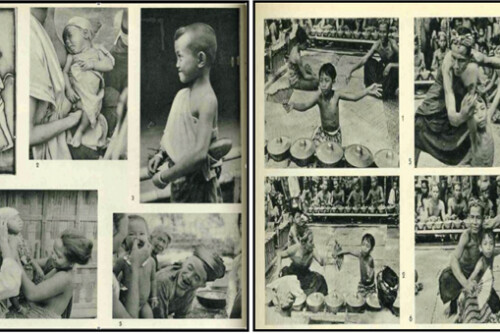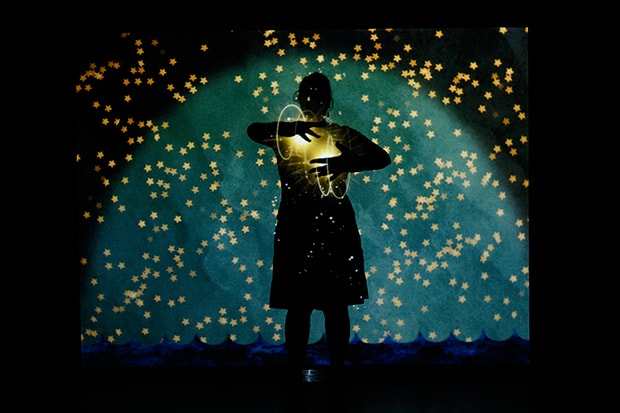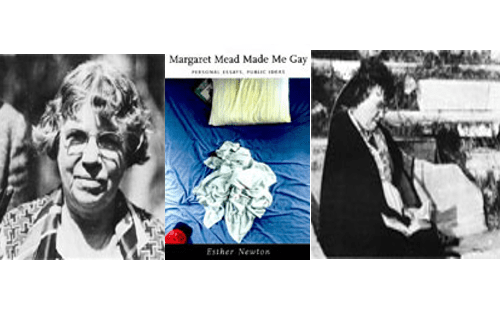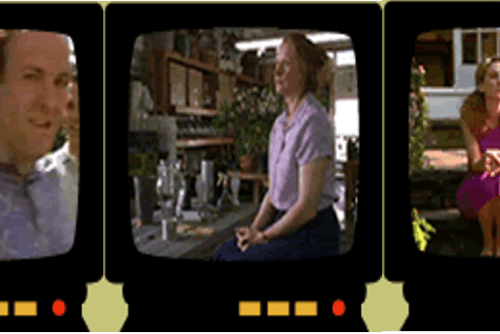Asians in the Library
But what does this communication look like? If YouTube stars are virtuosic in their production of the techniques and procedures of understanding and discussing race through the register of virtuality, what are the implications of such virtuosic virtuality? This isn’t postracial thinking or the corruption of social constructivism that claims that race, because it is socially constructed, simply does not matter. These YouTubers are still very much acknowledging and trafficking in stereotypes, and are also explicitly identifying themselves as Asian and Asian American. Nonetheless, YouTube stars often present racism as simply being comprised of misguided stereotypes that just need to be played around with on a performative level. Asian American YouTube video responses to Alexandra Wallace’s infamous “Asians in the Library” video provide a fertile ground on which to explore this further.
The treatment of social difference and how it functions in society—in terms of race, especially, but also implicitly gender, sexuality, class, nation, and high-school clique—in these videos is often dealt with in terms of stereotypes. Again, the way this often works, through parody and humor, is not to subvert stereotypes by posing a more real or authentic Asian or Asian American self, but merely to kind of laugh at how stupid yet funny stereotypes are. In the video above, we see Justin Chon facetiously purporting to present the “facts” about Asian Americans, but what follows is not a presentation of authenticity but a silly dance performance and enactment of cultural stereotypes, framed against the backdrop of an the American flag while stereotypically Oriental music plays in the background. The short is a delightfully subversive and silly response that mocks both Wallace and community responses to racism, which often debunk racist caricaturing by invoking authenticity and a true cultural heritage, either rooted in an authentic understanding of Asia or in a patriotic claim to incorporation within the United States citizenry. In doing so, the video seems to gesture toward the potential withering of the racial aura through YouTube; the mechanical reproduction of Asian stereotypes moving toward “the liquidation of the traditional value of the cultural heritage.”1 And in doing so, this “idle talk” may in itself produce new facts or states and relationships of being.
But many of the videos that were posted in response to Wallace’s were much more problematic than “UCLA Girl PSA,” and were emblematic of how the understanding of race as virtual is not in itself antiracist or antioppressive. In his response video to “Asians in the Library,” Traphik says, “This bitch is not racist, she’s just stupid … it’s our duty to educate people,” and that the kind of people who make these kinds of videos were probably never hugged as babies or were molested as children, and thus have all of this pent-up anger. “In terms of Alexandra Wallace,” he says, “I feel like we just really need to like not punch her but maybe like punch her in the vagina one time, shake her real quick, and then be like, ‘Ay bitch, stop being stupid!’ And then educate her, love her.” In this quote, we see violent, misogynistic, rape-culture language used to express outrage at the video, but at the same time we see a disavowal of structural racism that seems quite indicative of many of the most popular responses made by Asian Americans on YouTube, which largely came from East and Southeast Asian American men. Just as instructive is the moment at the end of the video, when Traphik makes a qualifying statement by saying “If you’re calling me a cocky, conceited asshole right now, realize that I’m just playin’ around.”
The virtuality of Traphik’s performance—in treating Wallace herself as a stereotypical, dumb, white bitch, and playing up his Asian gangsta persona—provides him with an excuse for his misogynistic language. The idea that he is just ranting on the Internet further removes his responsibility for violence: it is not as if he is physically harming Wallace. The damage—from both Traphik and Wallace’s comments—is all virtual, and thus, something to be laughed off.
The degradation of the racial aura thus does not necessarily result in a democratic space for antiracist activity and performance. These videos demonstrate how virtuosic virtuality labors in the service of power. The workers’ knowledge that these YouTubers have developed—the ability to make short videos quickly using parody, stereotype subversion, song, and camera confessionals—is still co-opted as productive post-Fordist labor. Again, if we apprehend post-Fordist labor as a form of labor that services capitalism as well as racism, colonialism, and heteropatriarchy, Traphik’s video comes into clearer focus as performing the hidden yet productive labor of not just putting Alexandra Wallace in her place, but also putting his young Asian American audience in their place. Asian American videos must necessarily make use of misogyny in their parody, and the parody must neither be too serious nor dampen the lighthearted, virtual mood.
Section V
I am the political chair of an Asian American student group at my university, which is the only explicitly Asian American club on campus. It does not function as a cultural group, but as a political one. The board membership is heavily made up of members of East Asian descent. A few days before the UCLA video went viral, I sent out an email to the board, which consists of about 20 members, with a link to a news article about the shooting of Surinder Singh and Gurmej Atwal, two elderly Sikh American men who were shot—Singh fatally—while taking a walk in their Sacramento neighborhood, in an apparent hate crime.2 Atwal later died of his injuries.3 Singh and Atwal were both wearing dastars; racist attacks on Sikh men wearing “turbans” and thus read as terrorists has been a fact of post-9/11 American life. Not a single board member responded to my email. A few days later, my Gmail inbox, Facebook, Twitter, and Tumblr feeds were full of discussion, in many cases led by Asian American Alliance board members, about Wallace’s video—calling our her blatant racism, and posting response videos.
What I am left wondering is what is the process by which this hate crime—someone’s death—is rendered less important than an amateur YouTube vlog? If Islamophobia in post-9/11 America is an expression of racism against Arabs, South Asians, Muslims, and those read as Muslim, has the definition and popular understanding of Asian American expanded to adequately accommodate this emergent racialization? While common YouTube presentations do not always lay out strict definitions of who is included in the term Asian American and who is not, if we look at the ethnic and regional heritages of the most popular YouTube stars, at the stereotypes they claim are particular to Asian Americans, and at the events they respond to, it is quite apparent that South Asians are not part of their intended audience. To be fair, it is not necessarily the case that many young Desi Americans desire this inclusion or themselves identify as Asian American. I would argue that the new virtuality of race and the eternal question of “who counts” as understood by young people through the visual register of YouTube videos is becoming increasingly codified with every upload, view, and subscription. While the racialization of brown skin and dress bring up real, material concerns of life and death for Arabs, Muslims, and South Asians, the emergence of East Asian American YouTubers suggests to me an understanding of anti-Asian racism as a racialization of yellow that despite sounding legibly and familiarly racist, operates on a virtual level and is thus ill-equipped to deal with the material weight of assault and murder.
More recently, the complete lack of popular YouTube videos made about the inquiry into Private Danny Chen’s suicide further underscores the limitations of Asian American YouTube presence and popularity in addressing the racist treatment and death of a man who in another uniform might have passed for an Asian American YouTube star himself.4 While Singh and Atwal, both Sikh, elderly, and first-generation, may have fallen outside the popular understanding of who belongs to the Asian American community, Chen, a young, second-generation Chinese American, certainly does not. The story of Chen’s treatment at an Afghan military base has been widely publicized as an indication of ongoing racism in the military ranks and of the particular struggles and oppressions that Asian American soldiers face. The names that Danny Chen was called in the weeks before his death—chink, gook, dragon lady5 —should ostensibly be legible as racism to all those who responded to Alexandra Wallace. But if the “Asians in the Library” video was received with outrage and YouTube responses in large part because Wallace’s rant seemed outlandish for a platform where race seems virtual, Chen’s death serves as a reminder of how stereotypes and words function as racist, and of the horrible weight that gives slurs their force, under which the transformative potential of our virtual stars threatens to collapse.
Under the post-Fordist regime of virtuosic labor, the current virtualization of the racial aura aestheticizes difference but not the power that produces difference. As Virno describes Benjamin, “the media trains the senses … to distinguish ‘an enormous and sudden margin of freedom’ even in the most trite and repetitive aspects of daily life.” This is the most cynical interpretation of what these YouTube stars represent: although they have attracted a wide following by seemingly demonstrating that the YouTube platform provides freedom from the stereotyping and discrimination in the entertainment industry, in actuality, YouTube ghettoizes Asian American entertainment production and profits from the unpaid labor of YouTube stars with zero risk. And even further, their labor produces not just the videos, but an entire code of understanding and communicating about racism and other forms of power and their articulations, limiting the language and media we have to talk about Singh, Atwal, and Chen. While some videos might gesture toward YouTube as a platform of radical play, distraction, and invention, without a Benjaminian politicization of art, Asian American YouTube videos can only make incremental gains toward a kind of democratic progress. And in exchange for that progress, we will continue to pay dearly.
- Benjamin 221. [↩]
- Julianne Hing, “Deadly Shooting of Sikh Men Rocks Calif. Community,” Colorlines, 9 Mar. 2011, 27 Jan. 2012. [↩]
- Julianne Hing, “Second Sikh Man Dies After Suspected Hate Crime Attack,” Colorlines, 19 Apr. 2011, 27 Jan. 2012. [↩]
- The New York chapter of the Organization of Chinese Americans, a strong advocate for Chen’s family, released a YouTube video entitled, “What Happened to Private Danny Chen?” that was linked and referred to by several news outlets, but not by any Asian American YouTube stars. As of January 16, 2012 it has received a modest 37,000 views, many of which can be attributed to the publication of a feature article about Chen in New York magazine. [↩]
- Amy Goodman, “Death of Private Danny Chen: Military Admits Chen Was Target of Race-Based Hazing on Daily Basis,” Democracy Now! 9 Jan. 2012. [↩]





